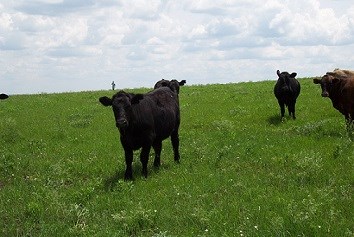
NPS Photo 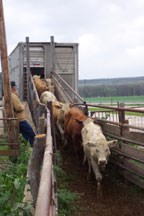
NPS Photo Unloading CattleHere at the preserve, cattle graze for 90 days. Cattle can gain over two pounds per day on the lush and nutrient rich grasses of the prairie. In the photo, the cattle are being "unloaded from the trucks one at a time," says ranch caretaker Gene Matile. Mr. Matile is responsible for counting how many head of cattle are off-loaded from the trucks, while keeping a careful eye to watch for sick or injured steers. Once the cattle are unloaded into the holding pens, they are then moved to various pastures where they graze and fatten before being sent to feedlots. During this time, Gene is responsible for taking care of the cattle by feeding mineral supplement, administering medicine as needed, and making sure the cattle remain in the pastures. Even before this cycle begins, he is responsible for burning last season's dead prairie grasses, that will in turn promote new growth. 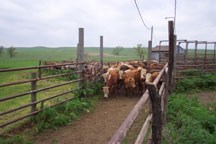
NPS Photo Loading CattleStarting in mid July, cattle are gathered and loaded back onto the semi trucks for shipment to feedlots. Here are some photos from several days of "gatherin" in the Flint Hills at the preserve. These modern day cowboys utilize many of the same whistles, calls, and horsemanship techniques that have been used for centuries. Imagine the sounds made by the cattle and cowboys as both go about their daily routine. As the cattle make their way south from the far northern pastures to the loading pens, their low "bawling" sounds are met by the gentle, calming calls of the cowboys on horseback as they are driven to their next destination. 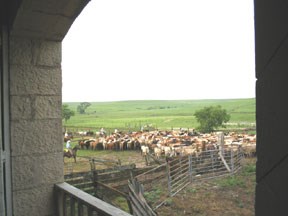
NPS Photo Cattle are herded from the pastures and wait their turn in the pens before loading onto the semi trucks. 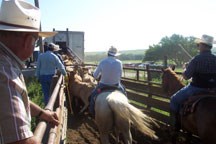
NPS Photo Cattle are then loaded onto the semi trucks, making their way to feedlots. 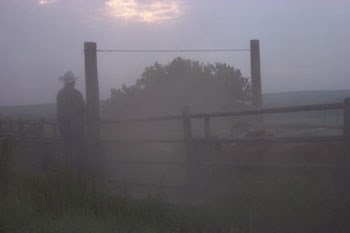
NPS Photo It was a dusty, dirty day in the pens today. Cowboys Gene Matile, Norm Wilson, Bruce Brock and others assist in pushing and encouraging cattle through the loading chutes and onto the trucks. |
Last updated: February 20, 2022
